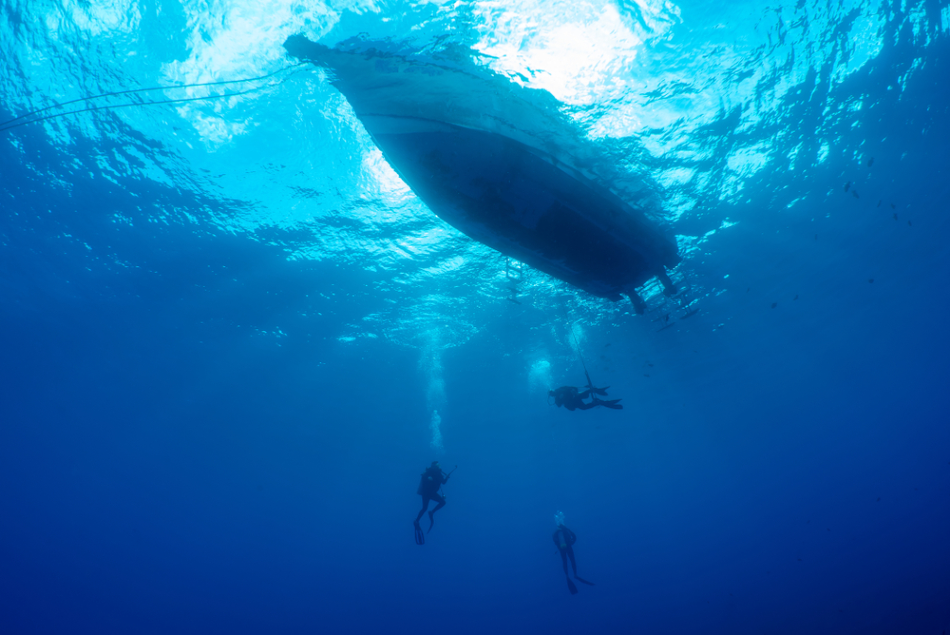EU scientists have made a discovery that could completely revamp underwater imaging, communication, and range finding techniques across the global maritime industry. The findings which came out of the €1 million KETmaritime project supported by the European Regional Development Fund, identified how blue-light laser technology enhances underwater object detection.

Image Credit: Silent O/Shutterstock.com
The researchers working on the KETmaritime project published their findings yesterday as part of a comprehensive report on Photonic Marine Applications.
Made up of seven core partners from private, public, and educational bodies, the KETmaritime consortium brings together world-class institutions to develop technologies, support progress, and meet the demands of the future for the maritime sector in and around the Atlantic Ocean.
"These photonics will be one of the most important technologies for the 21st century.”
Ana Vila, Project leader, International Iberian Nanotechnology Laboratory (INL)
When announcing the report, Vila stated how the results were achieved by progressive collaboration with AIMEN, the highly acclaimed non-profit research association with expertise in advanced manufacturing technologies, including laser processing, robotics, and automation.
Made up of over 100 companies, AIMEN is committed to fostering innovation through collaboration. The aim of the collaboration between INL and AIMEN was to proceed with discovering new photonic marine applications via state-of-the-art laser development.
“Through recently acquired knowledge and technological breakthroughs we are ready to profit from the photonic revolution achieving greater advances and control in the application of light across many high-tech markets."
Ana Vila
Employing photons is a fundamental part of the process of structural monitoring of marine assets as well as playing a key role in the “development of detection and recognition systems applicable to areas including navigation, tracking of objects and masses at sea and maritime rescue,” she added.
Based in France, the CIMAP research laboratory has recently been fine-tuning its development of blue-light lasers through the use of photons. CIMAP recently achieving a record 7.5 constant wave output at 425 nm wavelength in wave and pulse regimes, according to Vila.
“This is understood to be by far the highest constant wave ‘pure blue’ power generated from a frequency-doubled fiber laser."
Ana Vila
Conventional underwater object detection methods have typically employed acoustic waves, but this technique has its limitations due to environmental signal refractions and reflections that impact system accuracy when compared with laser-based systems. Laser technologies allow for higher resolutions over a greater range with a better chance of achieving high directionality.
Light absorption in water is lowest in the 400-450 nm spectral range, which allows laser light to permeate over long distances as well as maintaining almost all its strength.
Vila added: “They also allow new methods of wide-band and interception-proofed communication.”
Current predictions forecast the global photonics market to exceed €615 billion by the end of the year. Between 2005 and 2017, the photonics market demonstrated a growth of 7%, which was double that of global GDP and outperforming industries, including the food and automotive sectors.
Photonics concerns the physical science of light (photon) generation, manipulation, and detection. Generally, most applications of photonics are within the range of visible and near-infrared light and include telecommunications, lighting, and information processing such as bar code scanning. Other more advanced photonic applications include concentrated beams for cutting and welding as well as 3D printing applications, medicine, agriculture, and robotics.
The KETmaritime project will continue to showcase and promote its research and next-generation technology and accelerate innovation in the Atlantic area where ‘key enabling technologies’ are concerned. As well as INL, AIMEN, and CIMAP, other partners include the Portuguese Forum Oceano Association of Maritime Economy, Spain based PRODINTEC, Ireland’s MaREI and the UK’s non-profit marine cluster Marine South East (MSE).
With sustained backing from the Interreg Atlantic Area Program, via the European Development Fund, the project will continue to build collaboration networks, promote knowledge transfer, and identify future technological priorities to enrich maritime research and development.
Disclaimer: The views expressed here are those of the author expressed in their private capacity and do not necessarily represent the views of AZoM.com Limited T/A AZoNetwork the owner and operator of this website. This disclaimer forms part of the Terms and conditions of use of this website.